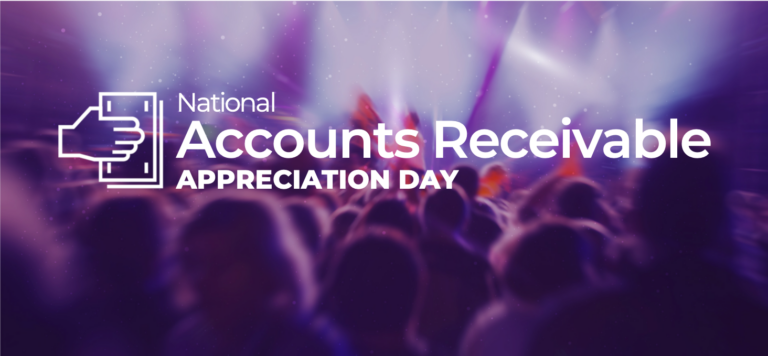How confident are you that all of your customers are sound credit risks?
How many of them are new businesses and lack a proven payment history? Which ones might be struggling in the economic downturn more than is obvious? Are there any cashflow problems that you should know about?
You don’t know what you don’t know. And when confidence is low — or hasn’t been formed yet — between a buyer and seller, you might consider a financing arrangement that limits potential risks, like cash on delivery (COD). After all, if you want to make payment collection less of a headache, providing customers with a hassle-free, less stressful option seems a sound strategy.
What Is Cash on Delivery?
As its name would imply, COD is a purchasing arrangement where the recipient of a good or service doesn’t submit the required payment until delivery. Conversely, the delivery is not finalized until the payment is verified. So if the transaction isn’t completed, the products return to the seller.
COD is most commonly employed by brick-and-mortar retail outlets, where the invoicing, delivery, and purchasing of a product happen simultaneously in the same geographic location (typically a checkout line). But COD is also very common among order-based retailers as well, where selections are made online, over the phone, or via catalog.
You can explore the basics of cash on delivery in our article: What Is Cash on Delivery?
Mechanics of COD
When customers place a new order — via a website or sales staff — they select the COD option. An invoice, featuring the estimated cost including delivery, is then generated and sent to the buyer either through email or traditional mail.
Transport is subsequently handled by either the seller’s staff or through a shipping partner, who also oversees payment collection. And if the transaction is not completed, the delivery personnel bear the responsibility for returning the unpurchased shipment.
What Does This Look Like?
A common, everyday example of COD would be food delivery. You just heard about a good Vietnamese restaurant that recently opened, so you call them up and order some spring rolls and pho. Rather than giving them your credit card number over the phone, you opt to pay the delivery driver in cash when they show up with your food.
Alternately, assume you run a boutique clothing store. A new designer — you haven’t heard of before — is offering a collection of sun-dresses that your clientele would love. You pull up their ordering website and pick a handful of options that will flesh out your inventory. Instead of paying upfront with the company credit card, you choose the COD option. Now you can be confident that if there are any shipping delays for this new business, you won’t have funds tied up unnecessarily. Similarly, you’ll be able to observe the state of the actual garments before you commit to a purchase.
Beyond Cash
Despite its name, COD doesn’t solely require the use of cold, hard cash — which is why some refer to COD as “collection on delivery.” Purchasers often use:
- Cash
- Checks
- Credit cards
- Online payment platforms (e.g., PayPal, Apple Pay)
What Works? What Doesn’t?
Whether a buyer or seller, there are a number of benefits that can be captured through a COD payment option. However, each of these perks are balanced by corresponding risks.
Advantages for Sellers
- Rapid AR: Compared to more traditional, credit-based sales policies, a COD strategy can significantly cut payment timelines and remove the risk of unpaid invoices.
- Impulse buys: When a buyer doesn’t need to come up with the necessary funds at time of ordering, there’s a higher chance that they’ll choose to buy more than the bare necessities.
- Payment flexibility: With a COD policy, you can tap into the market of consumers who may not have a credit card or are hesitant to exchange credit or banking information online.
- Reputation building: There’s a lot of fraud that happens on the Internet, and if your business is small and new, buyers might not be sure how much they can trust you. With COD you can build your brand and overall consumer confidence by offsetting some of the risks forthose hesitant customers.
Advantages for Buyers
- Less Fraud: If you only pay for the goods that are physically in your possession, it’s much harder to fall victim to scammers. Similarly, buyers can often inspect the quality of remotely-ordered goods depending on the payment conditions before finalizing the purchase.
- Lead time: Choosing COD allows buyers additional time to gather the needed funds to pay for orders, so future, short-term income can be considered when making purchasing choices.
Risks for Sellers
- Frequent returns: Buyers change their minds, and with each COD order — particularly those with a long lead-time — you run the risk of a purchaser losing interest before the transaction is finalized. And every canceled order means an additional shipping cost for your business.
- Partner problems: Unless your company handles all of its deliveries internally, you’ll likely be relying on a third party to oversee your collections, reducing your level of direct control and increasing the potential of outside risks or complications.
Risks for Buyers
- Higher costs: Since sellers assume more risk with a COD payment scheme, they commonly will offset some of that liability by charging a higher price than if the transaction was completed at order.
- Cashflow problems: For many businesses, cash in hand fluctuates daily. And depending on the flexibility of the actual payment options — for example, exclusively requiring physical cash or a direct bank transfer — some sellers may face challenges in finalizing their purchases, even if they had the necessary funds available at the time of ordering.
COD Alternatives
Of course, cash on delivery may not work for every company. Or it might need to be heavily modified to fit within the unique demands of your business or industry. Fortunately, there are plenty of options when it comes to receiving payment.
Cash in advance
Requiring customers to submit payment upon ordering is always an option. And while this method avoids the potential pitfalls of a COD model, it shifts all of the risk to the consumer side of the transaction — a move that could limit your potential customer base.
Autopay
Alternately, if your AR platform can support it, you might consider providing customers with an autopay option. These payments can be scheduled to trigger at any point in the delivery process, from initial ordering to invoicing to actual delivery. And by controlling the transaction internally, you reduce the likelihood of complications from your shipping partners.
Credit
Perhaps the most common alternative is a traditional credit model. Consumers can order the necessary goods or services, and payment isn’t required until after delivery, typically within 30 days. For this method to work effectively, you might consider employing an automated accounts receivable platform that can reduce management workload while accelerating collections.
Bolster Your Cash Flow with Invoiced
Whether you choose a COD model or some other payment strategy, having an effective billing platform is critical to keeping your business well-financed and operational. So if increased collection rates and a better experience for you and your customers sounds appealing, consider scheduling a demo of our AR collections software. With your accounts receivable on autopilot, you can focus on what’s truly important — serving your customers.




